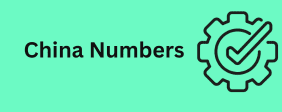A creative director should not be torn between endless tasks. Their effectiveness lies elsewhere: creating an environment for creativity, building trust, analyzing their work, developing a team, and staying up to date with industry events.
Dima Vtulkin, an independent creative director with 16 years of A creative director should experience in advertising, shares how to be truly productive in this role.
How to manage timeA creative director should
Multitasking is not about productivity, it’s about stress. If your schedule is 100% full, there’s no room for unexpected situations and thoughtful analysis. And the higher the position, the more unpredictability. In addition, when your brain is overloaded, it’s easier to choose an obvious solution instead of a strong idea.
Routine work (writing texts, editing scripts, reviewing the team’s work) should take up no more than half of the working time, leaving space for:
- strategic planning;
- personnel development;
- case tracking;
- generating new ideas.
What is important in the work of a creative director?
1. Create space for creativity
The creative director must create an environment where:
- any opinion can be expressed and heard;
- there are no hierarchical barriers to ideas;
- You can discuss not only work issues, but also personal situations.
I believe that creativity is a space of freedom. If I can safely express my dissatisfaction with small things or share complex thoughts about socio-political issues, then expressing a creative idea will not be a problem.
This freedom gives birth to unexpected and powerful ideas. For example, in the project for Nutella and Samokat, one of our employees suggested including a recipe for pancakes in the campaign – an idea that later ended up in the portfolio.
2. Build trusting relationships
A creative director must build trust with all stakeholders in the process – clients, strategists, account managers, developers and contractors.
I’m an introvert and I don’t really like talking to people, but I had to learn it. A creative director is a communicator.
Here’s what’s important:
- the ability to admit mistakes and take responsibility;
- using “I” instead of “we” (“I think”, “I like”);
- openness and honesty in communication.
For example, in one meeting with
a major client, I directly admitted: “We misunderstood you whatsapp number list and did the wrong thing.” Although the account director was horrified, the relationship between the creative and the client improved significantly after that, because the client saw honesty and a willingness to take responsibility.
3. Constantly reflect
Self-reflection is critical for a creative director. This may include therapy, coaching, and networking with peers.
Basic skills:
- the ability to stop and ask yourself the question, “Perhaps I’m wrong?”
- using clarifying questions: “What did you mean?”
- the ability to reconsider one’s decisions
When I launched the MTS Youth project, I initially dug in my heels and rejected the team’s ideas, even saying something I still regret: “Look at the title on my business card. We don’t do that!” But then I rethought the situation and together we created one of the most successful and innovative advertisements for MTS at that time.
4. Develop a team and look for new people
Finding talent is my direct responsibility. When I your reportable winnings will be came to VK, the team grew from 11 to 21 people, and only one was hired on the recommendation of HR. I found the rest.
The creative director needs to:
- have your own database of potential employees;
- actively interact with the professional community;
- engage in developing the existing team.
I always have a list of specialists I would like to work with. slovakia business directory Searching by recommendations from Colleen works more effectively than standard HR recruiting.
5. Interact with the industry
A creative director should actively participate in professional conferences and discussions, sharing experience and knowledge with colleagues.
